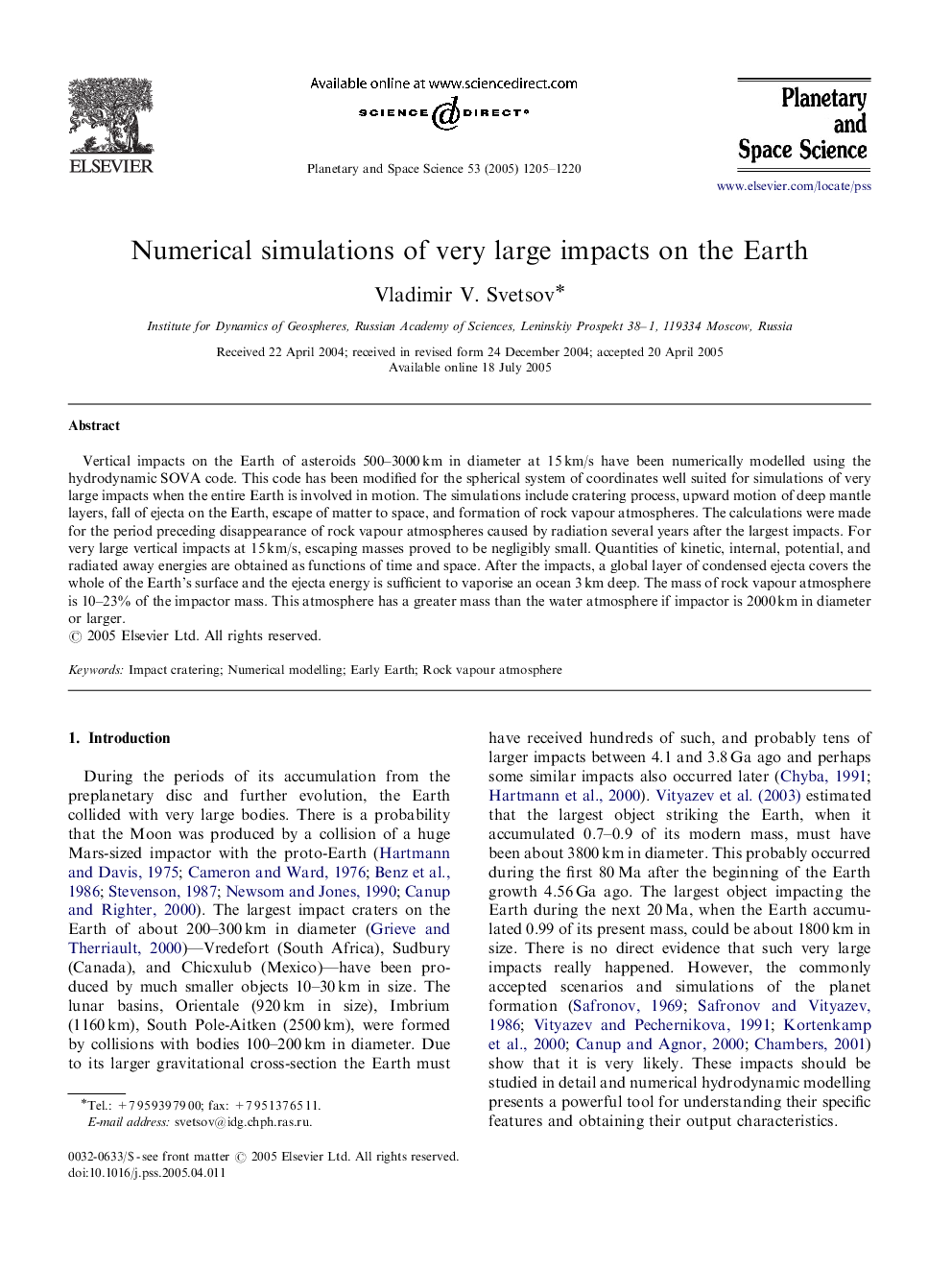| Article ID | Journal | Published Year | Pages | File Type |
|---|---|---|---|---|
| 10705437 | Planetary and Space Science | 2005 | 16 Pages |
Abstract
Vertical impacts on the Earth of asteroids 500-3000Â km in diameter at 15Â km/s have been numerically modelled using the hydrodynamic SOVA code. This code has been modified for the spherical system of coordinates well suited for simulations of very large impacts when the entire Earth is involved in motion. The simulations include cratering process, upward motion of deep mantle layers, fall of ejecta on the Earth, escape of matter to space, and formation of rock vapour atmospheres. The calculations were made for the period preceding disappearance of rock vapour atmospheres caused by radiation several years after the largest impacts. For very large vertical impacts at 15Â km/s, escaping masses proved to be negligibly small. Quantities of kinetic, internal, potential, and radiated away energies are obtained as functions of time and space. After the impacts, a global layer of condensed ejecta covers the whole of the Earth's surface and the ejecta energy is sufficient to vaporise an ocean 3Â km deep. The mass of rock vapour atmosphere is 10-23% of the impactor mass. This atmosphere has a greater mass than the water atmosphere if impactor is 2000Â km in diameter or larger.
Related Topics
Physical Sciences and Engineering
Earth and Planetary Sciences
Geophysics
Authors
Vladimir V. Svetsov,
